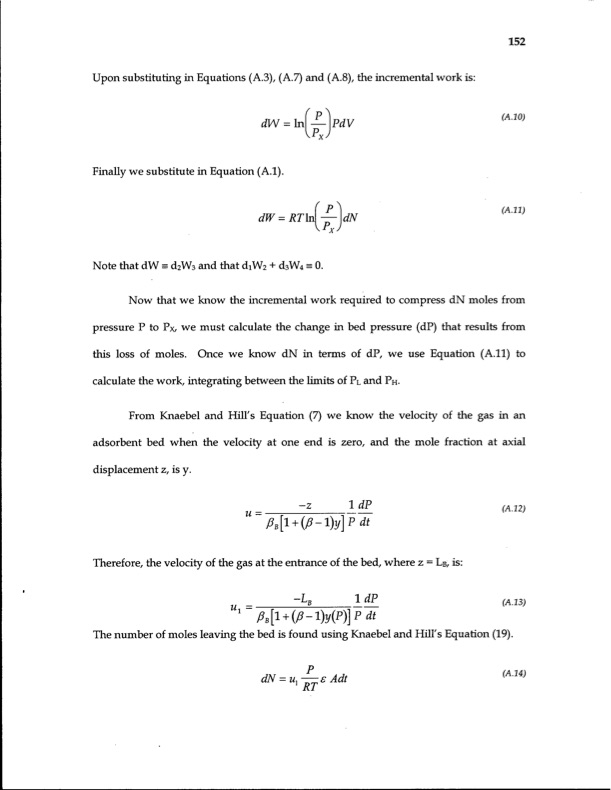
PDF Publication Title:
Text from PDF Page: 168
Upon substituting in Equations (A.3), (A.7) and (A.8), the incremental work is: rfW-ln PdV Finally we substitute in Equation (A.l). dW = RThi dN NotethatdW=d2W3 andthatdiW2 +d3W4 =0. (A.W) (All) Now that we know the incremental work required to compress dN moles from pressure P to Px, we must calculate the change in bed pressure (dP) that results from this loss of moles. Once we know dN in terms of dP, we use Equation (A.ll) to calculate the work, integrating between the limits of PL and PH. From Knaebel and Hill's Equation (7) w e know the velocity of the gas in an adsorbent bed when the velocity at one end is zero, and the mole fraction at axial displacement z, is y. -z 1 dP BB[l +(B-l)ij]P dt Therefore, the velocity of the gas at the entrance of the bed, where z = LB, is: (A.12) (A.13) 1 1dP B [l +(B-l)y(P)]P dt B u The number of moles leaving the bed is found using Knaebel and Hill's Equation (19). dN = u, —~z£ Adt 1RT (A.U) 152PDF Image | Energy Efficiency of Gas Separation Pressure Swing Adsorption

PDF Search Title:
Energy Efficiency of Gas Separation Pressure Swing AdsorptionOriginal File Name Searched:
ubc_1997-0009.pdfDIY PDF Search: Google It | Yahoo | Bing
CO2 Organic Rankine Cycle Experimenter Platform The supercritical CO2 phase change system is both a heat pump and organic rankine cycle which can be used for those purposes and as a supercritical extractor for advanced subcritical and supercritical extraction technology. Uses include producing nanoparticles, precious metal CO2 extraction, lithium battery recycling, and other applications... More Info
Heat Pumps CO2 ORC Heat Pump System Platform More Info
| CONTACT TEL: 608-238-6001 Email: greg@infinityturbine.com | RSS | AMP |